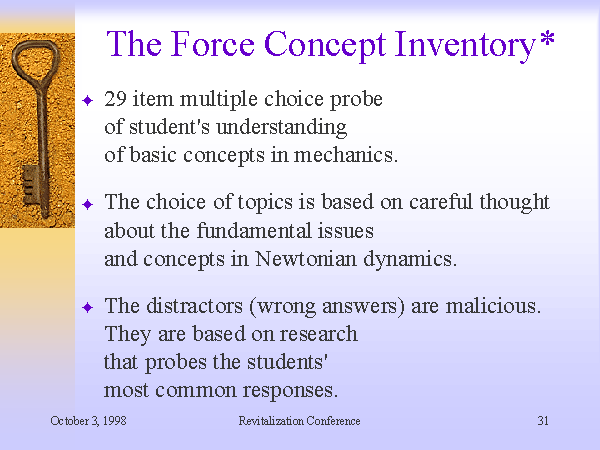Friday, May 31, 2013
Interview Given by President al-Assad to Lebanese Al-Manar TV
By
CNu
at
May 31, 2013
1 comments
![]()
Labels: The Great Game
do western governments and proxies want regime change in syria because of gas?
By
CNu
at
May 31, 2013
0
comments
![]()
Labels: resource war , The Great Game
turkish police find chemical weapons in the possession of al nusra terrorists heading for syria...,
By
CNu
at
May 31, 2013
0
comments
![]()
Labels: agenda , deceiver , elite , establishment , The Great Game , tricknology
Thursday, May 30, 2013
the end of sykes-picot
By
CNu
at
May 30, 2013
6
comments
![]()
Labels: The Great Game , WW-III
syria has received its russian missiles...,
Russia had promised delivery of the S-300 missile system to the Syrian government despite Western objections, saying the move would help stabilize the regional balance at a time of insurgency in Syria waged by Western-backed rebels.
Moscow is a staunch ally of Assad and it has appeared to grow more defiant since the European Union let its arms embargo on Syria expire as of June 1, opening up the possibility of the West arming the Syrian rebels.
"Syria has received the first shipment of Russian anti-aircraft S-300 rockets," Lebanese newspaper al-Akhbar newspaper quoted Assad as saying in an interview due to be broadcast later on Thursday.
More of the missiles would arrive soon, he was quoted as saying.
A source close to Russia's Defense Ministry said there had been a "bank transfer" in connection with the S-300 transaction but that Russian banks were becoming increasingly nervous about dealing with Assad.
"There were some problems with payments because big Russian banks were scared of dealing with Assad, but there was a bank transfer," the source said. "There are also not big banks and banks that are not based in Moscow. Beyond the down payment there was almost certainly a second payment, maybe a third."
By
CNu
at
May 30, 2013
0
comments
![]()
Labels: The Hardline
israel selling woof tickets about striking russian arms shipments...,
 |
| Israel defence secretary Moshe Ya'alon (left) with his US counterpart, Chuck Hagel. The EU has agreed to lift its arms embargo on Syria's rebels |
By
CNu
at
May 30, 2013
0
comments
![]()
Labels: Ass Clownery , not gonna happen...
Israel says Russian anti-aircraft system not headed to Syria yet..,
By
CNu
at
May 30, 2013
0
comments
![]()
Labels: Ass Clownery
Wednesday, May 29, 2013
going medieval...,
By
CNu
at
May 29, 2013
3
comments
![]()
Labels: The Hardline , What Now?
40 staggering statistics about the u.s. economy...,
By
CNu
at
May 29, 2013
2
comments
![]()
Labels: American Original , Collapse Casualties , you used to be the man
Tuesday, May 28, 2013
geometric unity and the observerse
By
CNu
at
May 28, 2013
4
comments
![]()
Labels: Possibilities
Monday, May 27, 2013
Rossi won't tell you his secrets, but John lets you in on his - so help him get the glass!
By
CNu
at
May 27, 2013
1 comments
![]()
Labels: culture of competence , gifts , The Straight and Narrow
are the shambling yeast monkeys REALLY inching up the kardashev scale?
By
CNu
at
May 27, 2013
0
comments
![]()
Labels: Possibilities
Sunday, May 26, 2013
the programmer's stone...,
 |
| When people become focused on the part of a shared problem that they are dealing with, and shift their attention from avoiding blame to achieving success, jelled teams can form. Because the problem has its own deep structure, the whole team grows an authentic structure by mirroring the problem that does not need to be imposed arbitrarily by management. Effectiveness increases, and innovative products are designed and built at lightning speed. Turning the focus on avoiding blame inside out so that it becomes achieving success removes the system boundaries between workers and that turns everything else inside out: |
By
CNu
at
May 26, 2013
1 comments
![]()
Labels: open source culture , People Centric Leadership
Saturday, May 25, 2013
grassroots coopetition vs. stacked-deck competition
By
CNu
at
May 25, 2013
1 comments
![]()
Labels: global system of 1% supremacy , institutional deconstruction , micro-insurgencies , tactical evolution
creating a STEM-based innovation lab in your crib...,
By
CNu
at
May 25, 2013
0
comments
![]()
Labels: culture of competence , open source culture , People Centric Leadership , truth
First Principle - Always Bet on Black - Redux
 No race that has anything to contribute to the markets of the world is long in any degree ostracized.
No race that has anything to contribute to the markets of the world is long in any degree ostracized.--Booker T. Washington
Having been invited to discuss solutions, I aim to summarize some of the experiences that have given rise to what I call an "open source business model". I should be able to accomplish this in three installments. (originally posted 12/20/07 - reposted 10/13/10 - one'mo gin today)
1. The power of cultural production.
2. The power of open source culture.
3. The power of creative collaboration.
So a few years ago, I'm experimenting with Content Management Systems (CMS) (the database driven backend to interactive websites) in the context of an image sharing technology. I read an article in the Kansas City Star about a comics creator in Kansas City Kansas who was experimenting with CD-Romics, or comics on compact disc. So I call this brother Anthony Jappa
Comics are extremely visual, the cover art is a major selling draw, and all-in-all comics would make perfect grist for the image sharing mill. Furthermore, I used to have a serious love jones for comic books. Long story short, though our initial collaboration did not yield a successful business model we've been friends and collaborators ever since. (digitizing covers for collectors proved excessively labor intensive, we couldn't get folks to do the work themselves, and eBay was already in full effect) And our continuing collaboration has produced a proven and successful methodology for infecting young minds with the urge to create, collaborate, and commercialize. I keep the original development site we constructed as a memento of our original scope and objectives - because where we've gone is so much beyond what this effort set out to achieve.
Back to the matter at hand. Brother Jappa is a true master in the field of creative cultural production. Largely self-taught, he has reached the stage in his career where he writes books and creates animated shorts. He earns his living doing what he loves to do. He is also one of the greatest natural teachers I have ever had the privilege of meeting. He can teach you not only the discipline, but can teach you everything there is to know about comics creation as a cultural production business, as well. It's in the latter domain that he has taught me a helluva lot about its history, its power, and changes in the nature of the thing that have resulted from monopolistic control of comics creation, publication, and distribution. The latter is the business reality against which he's had to contend for over a dozen years.
His innovative flirtation with CD-Romics was a preliminary effort to use technology to get around some of those distribution control barriers. When I met him, I was vaguely aware that the comics game had changed substantially since I was a kid, but I had no idea concerning the specific nature of the changes that had taken place. See, I was a hardcore comic book collector when I was boy. Back in the day, a dollar would get you 4 comics and an afternoon of mind expanding escape. Moreover, you could buy comics in any convenience store, many grocery stores, almost all pharmacies, they were everywhere newstands were to be found. Comics were not only the cheapest and best entertainment available to me - they became the core of my very first business, as well. By the age of 12, I had become a collector/dealer of comics. By the time I was 20, my collection was extensive enough that I was able to pay for my first two years of college tuition and expenses through the sale of much of that collection.
As anybody who has shared this addiction knows, comics are no longer ubiquitous and a dollar won't come anywhere near buying you even a single comic book. Jappa explained to me how the Marvel/DC/Diamond publication distribution monopolies had fundamentally altered the landscape of comic book availability and further, how the dominant business practices in the industry have made it exceedingly difficult for independant comics creators to break-in in any meaningful way into this field of cultural production and entertainment. For his business to succeed - and there's no question that his work is worldclass - Jappa's had to hustle and grind like a madman. Getting breaks here and there with dealers, working the convention circuit, and doing everything he can to figure out alternative pathways by which he can achieve mass distribution and proliferation of his work product.
Because my active interest in comics had fallen off after I sold the bulk of my collection, it had been years since I had paid comics any heed at all. However, I had noticed that comics were by no means as available as they once had been. Everything that Jappa taught me about the comic publication and distribution industry was a smaller scale instantiation of what Norman Kelley had written a few years earlier about the music industry.
Today, a great deal of public attention is misdirected toward issues of content in popular cultural production. Content is merely a symptom, it is not the root cause of the present malaise in popular cultural production. Control of production and distribution is the cause of the current malaise. There are worlds upon worlds of original, wholesome, uplifting, enlightening, and entertaining cultural production that never get published or put into widespread distribution. Folks lose their minds debating high/low distinctions of culture and anybody with an opinion is qualified to enter the fray. However, real practitioners and specialists in the business know that most of the actual barriers to the market reduce to business and interpersonal nuts and bolts. These include issues like;
• how artists are recruited,
• how contracts are structured for maximums profits for record firms,
• how much firms spend on the production of an artist's work,
• whether artists make their living solely by selling units or doing performances (a situation similar to that of blues musicians),
• how musicians lose the copyright to their music,
• the lack of royalty payments, and
• the Big Six publication and distribution monopoly
On a smaller scale, the comics industry is identical.
Very likely, there never will be a substitute for the paper comic that is the equivalent of the CD-ROM substitute for vinyl record albums, and the rapid and destabilizing emergence of mp3's as a substitute for CD-ROMS. But you never know. Brother Jappa has twelve years invested in the game and he's still hustling, grinding, and inovating in order to make that breakthrough. I'm going to support him with technology any and every way I know how to do.
Back to the matter at hand, the power of cultural production - one of the other fundamentals I learned from Jappa is the universality of the basic storyboard as the basis for all complex narrative storytelling. If you look into the basement of any movie that has ever been made, what you'll find that comics is the creative and preproduction grist for that creative mill. i.e., storyboards that lay out the visual as well as narrative flow that will be converted to the screen. Same goes for complex games and video games. The comics creation discipline is a fundamental prerequisite to any complex narrative cultural production that takes place in our society. It is a lynchpin of complex cultural production.
Readers of the assault know full well the power of images to manipulate and control the subliminal consciousness. As a singular historian and master of this game, Jappa has taught me a great deal about the intent and use of images across the history of comics - on both conscious and subconscious levels - to convey specific messages to the audience these comics are created to address.
Comics creation is an immensely powerful and fundamental narrative discipline that is imperative for us to master and control. There are no barriers to entry on the creation side, and we're Working overtime to figure out methods for short-circuiting and overcoming the market barriers posed by the dominant distribution monopoly. Technology is key to overcoming those barriers. The last really powerful aspect of this game is that both boys and girls enjoy and gravitate toward various aspects of the creative work involved with it. Children love to create, they love to do cultural production work, and they love to learn all the ins-and-outs of the technique involved with doing it well. It's a carrot with which draw children into an oasis of creation, collaboration, disciplined development of technique and invite him to meet and discuss ways in which we might collaborate.and last but not least the potential commercial rewards of harnessing their imaginations and plying their creative workproducts in the marketplace.
Matter of fact, it's the initial sugarcoating I've found effective for drawing children into routine use and increasing familiarity with open source technologies. We make a concerted effort to use only open source software in our digital production efforts. I'll explain this more fully in the next installment. It's important because not only do we want our kids to be creative producers and ply the workproduct of their imaginations in the market, we also want them to be creative technologists capable of directly controlling and modifying the tools used to do the fun stuff.
Work with open source tools and technologies conduces to exposure to the wide world of open source culture, as well - and that's a culture that is fundamentally all about surmounting control and distribution barriers. Our solutions will emerge from those small, dedicated crews that learn how to surmount current control and distribution barriers and collaborate with likeminded others to proliferate that knowhow far and wide...,
By
CNu
at
May 25, 2013
0
comments
![]()
Labels: knowledge , skill , truth , What IT DO Shawty...
observational learning...,
By
CNu
at
May 25, 2013
0
comments
![]()
Labels: monkey see - monkey do , open source culture , paradigm
coopetition...,
By
CNu
at
May 25, 2013
0
comments
![]()
Labels: common sense , ethics , symbiosis , System D , tactical evolution
Friday, May 24, 2013
psychiatry and drug companies as bad as teachers and the academy....,
By
CNu
at
May 24, 2013
0
comments
![]()
Labels: neuromancy , tricknology
MOOC - Maximizing Outreach to Outsider Communities?
By
CNu
at
May 24, 2013
11
comments
![]()
Labels: edumackation , hegemony , What IT DO Shawty...
Thursday, May 23, 2013
MOOC's still about Delivery of Instruction rather than Student Learning - why MOOLOS are coming....,
 |
| Talk is about MOOC's - it will shift to MOOLOS..., |
By
CNu
at
May 23, 2013
1 comments
![]()
Labels: open source culture , tactical evolution , What Now?
though he swears by only four, this is the notion I believe umbra is on about...,
By
CNu
at
May 23, 2013
2
comments
![]()
Labels: information anarchy , randomization
Wednesday, May 22, 2013
eusociality, mooc intelligence sorting, geolocation and climate change....,
- People want and need environmental information like never before;
- Demand coupled with new technologies and resources will enable access and application of that data and information like never before; and
- With personal, economic, and national security interests driving the use of that information, new policy and legal issues will arise like never before.
By
CNu
at
May 22, 2013
13
comments
![]()
Labels: cultural darwinism , culture of competence , What Now?
deficit in nation's aquifers accelerating...,
 usgs | A new U.S. Geological Survey study documents that the Nation's aquifers are being drawn down at an accelerating rate.
usgs | A new U.S. Geological Survey study documents that the Nation's aquifers are being drawn down at an accelerating rate.
By
CNu
at
May 22, 2013
0
comments
![]()
Labels: weather report
Jews Are Scared At Columbia It's As Simple As That
APNews | “Jews are scared at Columbia. It’s as simple as that,” he said. “There’s been so much vilification of Zionism, and it has spil...

-
theatlantic | The Ku Klux Klan, Ronald Reagan, and, for most of its history, the NRA all worked to control guns. The Founding Fathers...
-
Video - John Marco Allegro in an interview with Van Kooten & De Bie. TSMATC | Describing the growth of the mushroom ( boletos), P...
-
Farmer Scrub | We've just completed one full year of weighing and recording everything we harvest from the yard. I've uploaded a s...










